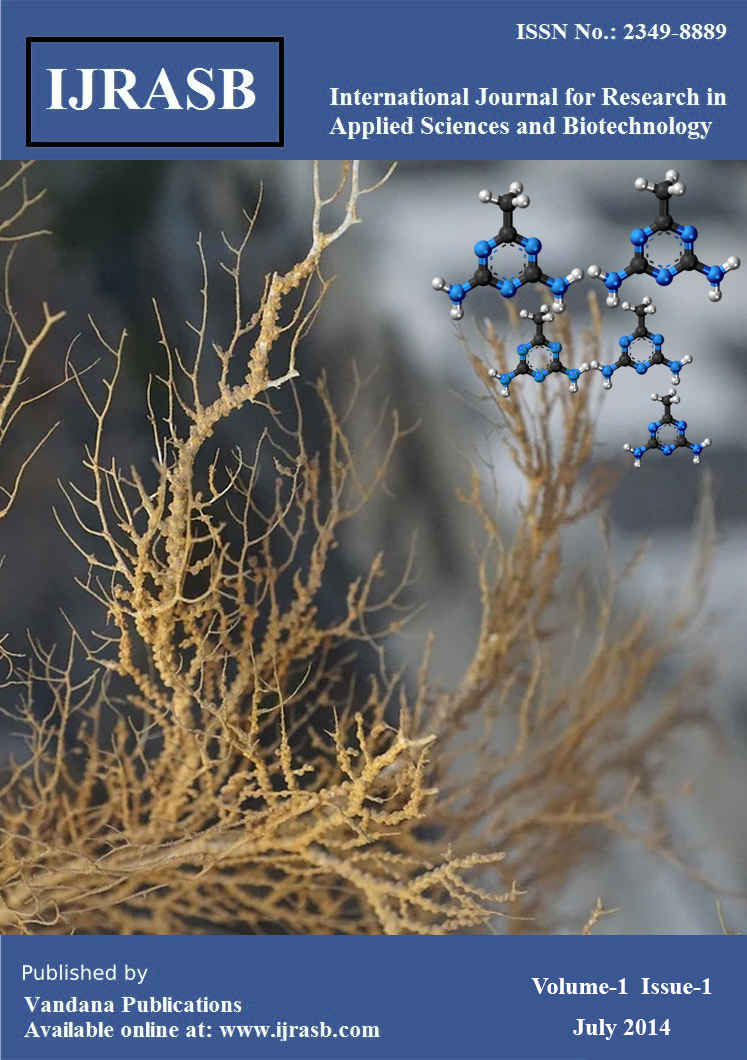Effect and Properties of Cissus Quadrangularis in Fracture Repair
Keywords:
Cissus Quadrangularis, Extraction, Phytochemical, AnthelminticAbstract
In current scenario focus on plant research has increased throughout the world and show immense potential of medicinal plants used in various traditional systems. Production of plant-made pharmaceuticals can gain more capital for new therapeutics. This paper highlights some of the phytochemical and pharmacological investigations of Cissus quadrangularis. Cissus quadrangularis L. is a succulent plant of family Vitaceae commonly found in tropical and subtropical xeric wood. It is a fleshy, cactus-like liana widely used in India. The plant is prescribed in Ayurvedic literature as a general tonic and analgesic, with specific bone fracture healing properties. The plant is believed to be useful in helminthiasis, anorexia, dyspepsia, colic, flatulence, skin diseases, leprosy, hemorrhage, epilepsy, convulsion, haemoptysis, tumors, chronic ulcers, swellings. The aim of the present study was the collection of Stem of Cissus quadrangularis, powdered and its successive extraction by soxhlet method. Then extracts are subjected to evaluate in vitro anthelmintic activity on earthworm Pheretima posthuma (Annelida). Extracts of Cissus quadrangularis Linn stem were subjected to qualitative phytochemical tests for different constituents and it was confirmed that the different plant extract contains constituents such as Phenolic compounds, tannins, saponins, steroids, carbohydrates, glycosides and triterpenoids etc. It is concluded by saying that, active constituents responsible for good pharmacological activity. Needless to say that versatile uses and various therapeutic activities has made plant a valuable medicinal herb.
Downloads
References
Ajaiyeoba EO, Oncha PA and Olarenwaju OT (2001). In- vitroanthelmintic properties of Buchholzia coiaceae and Gynandropis gynandra extract. Pharmaceutical Biology 39(3) 217- 20. [2]Anonymous (1992). Indian Medicinal Plants 2 (Orient Longman Ltd) 112. [3]Bundy DA (1994). Immunoepidemiology of intestinal Helminthic infection I: The global burden of intestinal nematode disease. Transactions of the Royal Society of Tropical Medicine and Hygiene 259-61. [4]Chopra NN, Chopra IC, Handa KL and Kapur LD (1958). Cissus quadrangularis. Indigenous Drugs of India edited by Dhar UD (Calcutta) 669–670. [5]Chopra SS, Patel MR, Gupta LP and Datta IC (1975). Studies on Cissus quadrangularis in experimental fracture repair: effect on chemical parameters in blood. Indian Journal of Medical Research (6) 824-825. [6]Enechi OC and Odonwodo I (2003). An assessment of the phytochemical and nutrient composition of the pulverized root of Cissus quadrangularis. Bio-Research 1 63–68. [6]Jainu M and Devi CS (2003). Potent antiulcerogenic activity of methanol extracts of Cissus quadrangularis by antioxidative mechanism. Journal of Clinical Biochemistry and Nutrition 34 43–47.
Jainu M and Devi CS (2004). Effect of Cissus quadrangularis on gastric mucosal defensive factors in experimentally induced gastric ulcer- a comparative study with Sucralfate. Journal of Medicinal Food 7(3) 372-376. [8]Jakikasem S, Limsiriwong P, Kajsongkarm T and Sontorntanasart T (2000). Phytochemical study of cissusquadrangularis. Thai Journal of Pharmaceutical Sciences (24) 25. [9]Justin S Raj and Baby Joseph (2011). Pharmacognostic and traditional properties of Cissus quadrangularis Linn -An overview. International Journal of Pharma and Bio Sciences 2(1) 132-139 [10]Martin RJ (1985). Y-Amino butyric acid and piperazine activated single channel currents from Ascaris sum body muscle. British Journal of Pharmacology 84(2) 445-61 [11]Murthy KNC, Vnitha A, Swamy M and Ravishankar GA (2003). Antioxidant and antimicrobial activity of Cissus quadrangularis. Journal of Medical Food 6(2) 99–105. [12]Prasad GC and Udupa KN (1972). Pathways and site ofaction of a phytogenic steroid from Cissusquadrangularis. Journal of Research in Indian Medicine 4 132. [13]Rastogi RP and Mehrotra BN (1995). Compendium of Indian Medicinal Plants Part I (Publication and information directorate) 104. [14]Segsunviriya C and Choomprabutra (1989). A clinical study of Cissus quadrangularis Linn. in hemorrhoid patients. In: Seminar of Research and Development of Medicinal Plant. Division of Medical Research, Department of Medical Sciences, Ministry of Public Health, Thailand 54–55 [15]Tagbota S and Townson S (2001). Antiparasitic properties of medicinaland other naturally occurring products. Advances in Parasitology 50 199-205. [16]Udupa KN and Prasad G (1964). Bio chemical Ca45 studies on effect of Cissus quadrangularis in fracture repair. Indian Journal of Medical Research 52 480-487 [17]Vidyadhar S, Saidulu M, Gopal TK, Chamundeeswari D, Umamaheswara Rao and David Banji (2010). In Vitro Anthelmintic Activity Of The Whole Plant Ofenicostemma Littorale By Using Various Extracts. International Journal of Applied Biology and Pharmaceutical Technology 1(3) 1119
Yoganarsimhan SN (2000). Medicinalplants of India (Cyber Media Bangalore) 2 136–137.
Downloads
Published
How to Cite
Issue
Section
License
Copyright (c) 2022 International Journal for Research in Applied Sciences and Biotechnology

This work is licensed under a Creative Commons Attribution-NonCommercial-NoDerivatives 4.0 International License.








